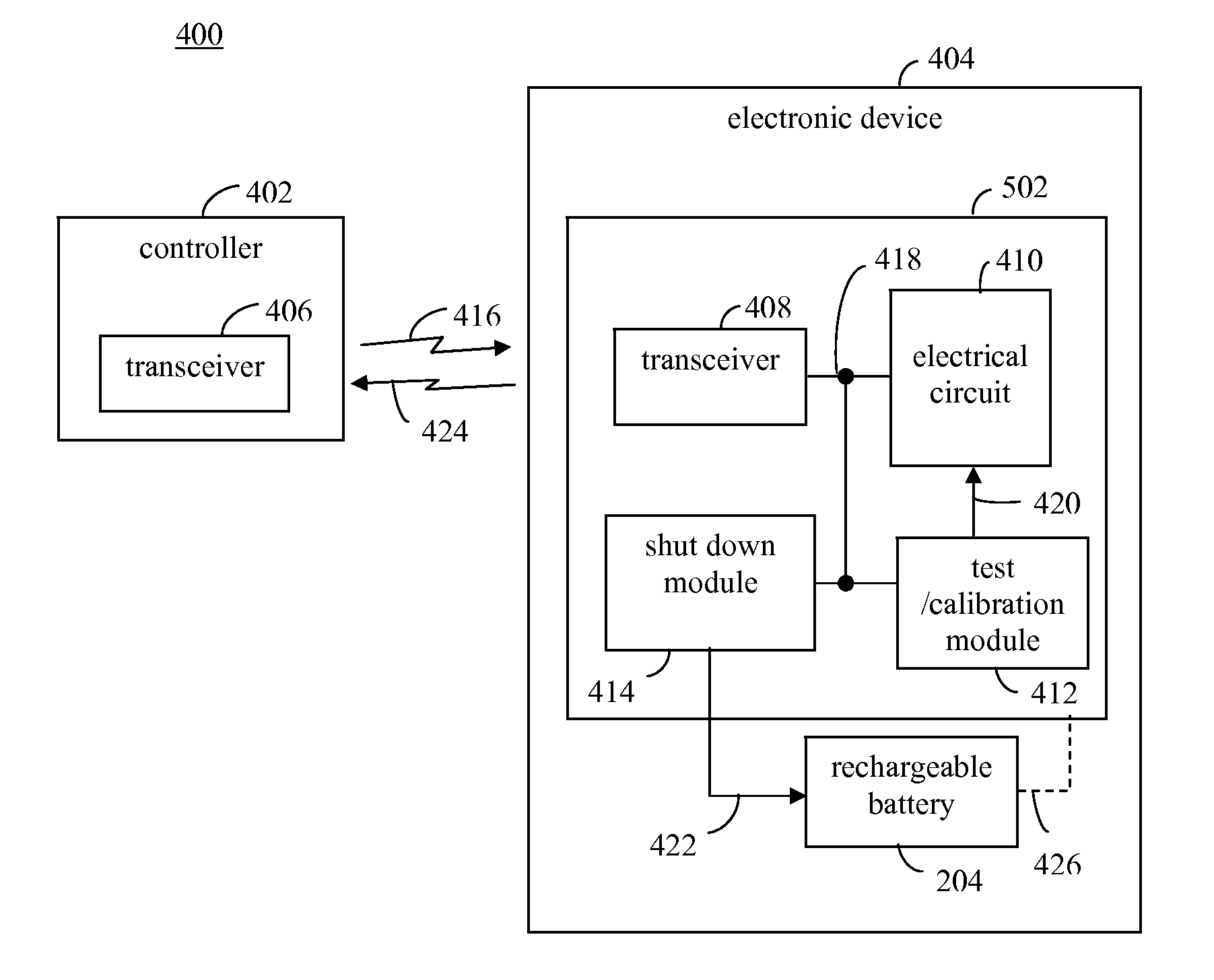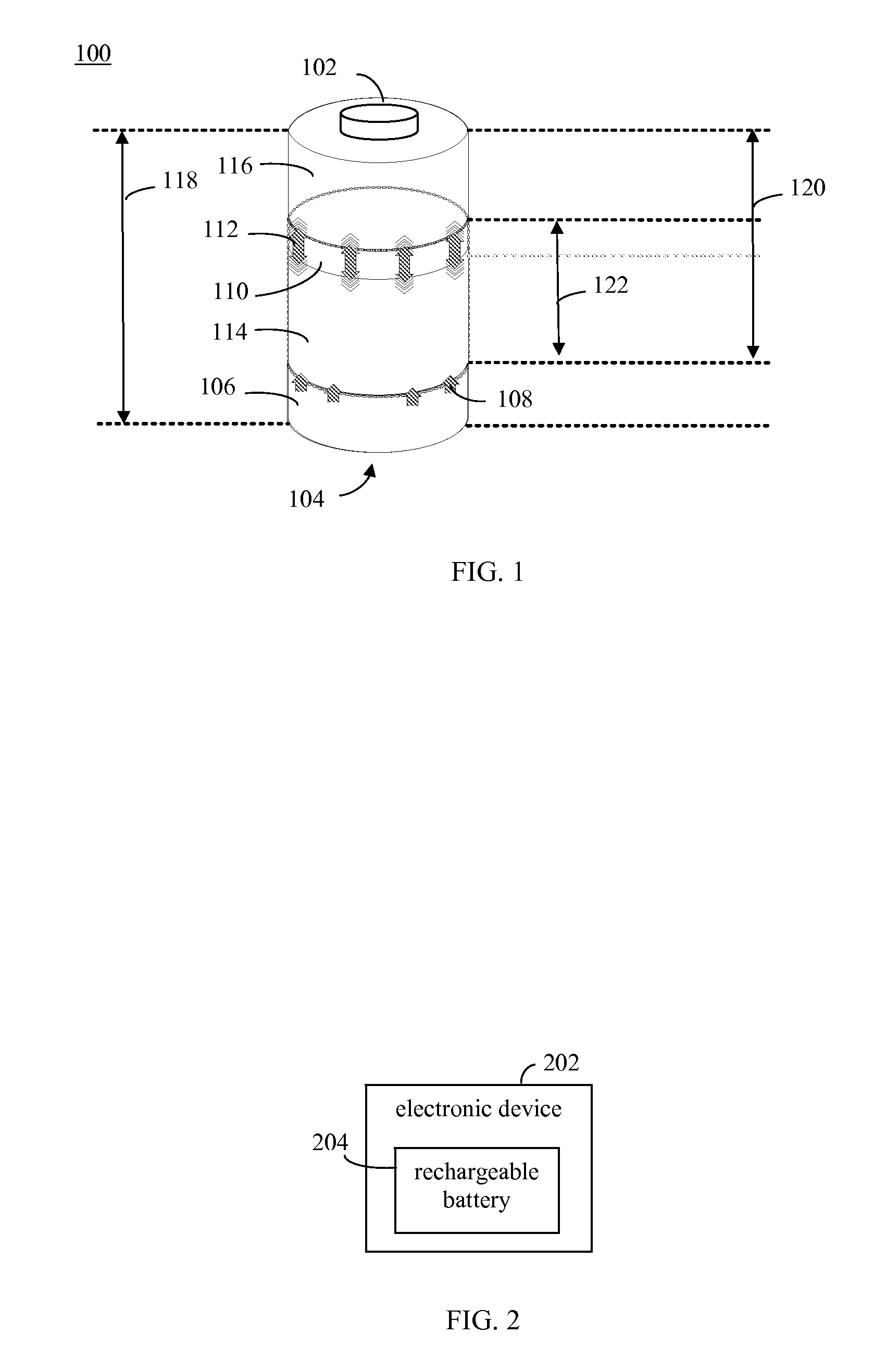Entering a battery power down mode using over-the-air command for wireless devices
a wireless device and wireless device technology, applied in the field of reducing power, can solve the problems of lithium battery self-discharge, loss of charge capacity, gradual loss of energy, etc., and achieve the effect of reducing power consumption and reducing power consumption
- Summary
- Abstract
- Description
- Claims
- Application Information
AI Technical Summary
Benefits of technology
Problems solved by technology
Method used
Image
Examples
example battery
II. Example Battery Characteristics
[0035]Embodiments of the present invention relate to batteries. A battery is a device that provides electrical energy used to power an electrical device. A battery typically includes one or more electrochemical cells that store chemical energy, which is converted to electrical energy that is output by the device to provide power. FIG. 1 shows a view representing charge characteristics of a battery 100, which are described in detail below. Battery 100 has a first terminal 102 (e.g., negative or positive polarity) and a second terminal 104 (with polarity opposite that of first terminal 102). Battery 100 may be a rechargeable battery formed of a material that enables recharging. For example, battery 100 may be a lithium-based rechargeable battery, such as a lithium ion (Li-ion) or lithium ion polymer (Li-ion polymer) battery. Charge in a rechargeable battery such as battery 100 can be restored by the application of electrical energy. Typically, the ma...
PUM
 Login to View More
Login to View More Abstract
Description
Claims
Application Information
 Login to View More
Login to View More - R&D
- Intellectual Property
- Life Sciences
- Materials
- Tech Scout
- Unparalleled Data Quality
- Higher Quality Content
- 60% Fewer Hallucinations
Browse by: Latest US Patents, China's latest patents, Technical Efficacy Thesaurus, Application Domain, Technology Topic, Popular Technical Reports.
© 2025 PatSnap. All rights reserved.Legal|Privacy policy|Modern Slavery Act Transparency Statement|Sitemap|About US| Contact US: help@patsnap.com



